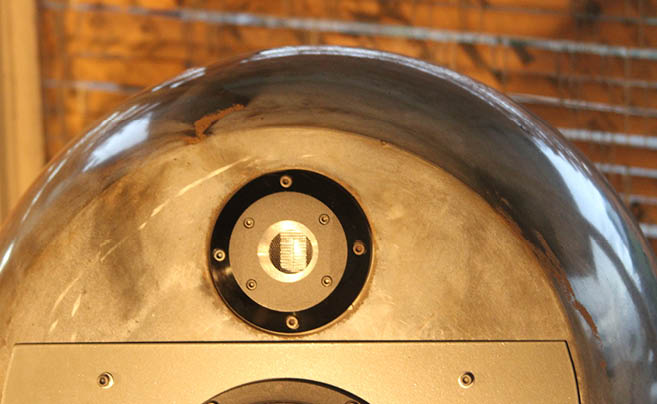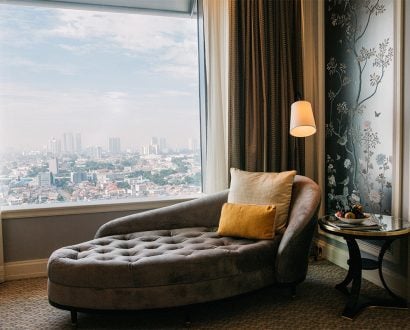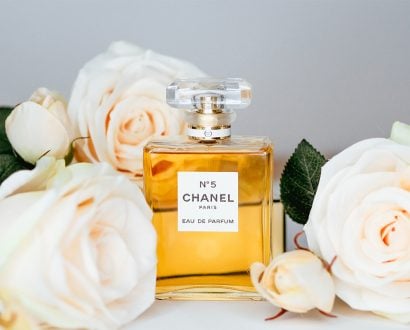In the small country town of Gunning, on the Old Hume Highway between Goulburn and Yass in New South Wales, there’s an 1880s shop frontage with three old windows in dire need of repair. It’s adjoined to what was once London House, a popular inn with a horse-and-coach entrance. The shop, which is actually the home, workshop, and studio of Michael Brown, looks empty. However, those with a curious nature who pass this classic old building in this traditional country town often stop and peer into the windows, because although the shop doesn’t look open, nor is it particularly welcoming, there are a few beautifully smooth concrete spheres displayed there. It’s almost as though the maker hasn’t decided whether or not he yet wants the world to see his work.
Some look closer and discover that they are speakers, and beautiful sculptures. Those with a trained eye will pick up that they are no ordinary pieces of handiwork. For starters, they are made of a notoriously hard material to work with (concrete), and they are perfectly round.
You need to meet the creator of these spherical concrete speakers to understand how special they really are. And then you need to listen.
My partner and I were passing through Gunning and were out for a walk when we stopped by the 1880s window. Both having a love of art and design, we wanted to know what such interesting pieces were doing half on display in a shop that seemed closed. They wouldn’t have been out of place in the Guggenheim Museum, or in any concert hall in the world.
We went to the door and gave it a nudge. It swung open but there was no-one there. The spheres sat there, shiny and new—off-the-form concrete balls freshly out of a mould. They were proud.
The walls of the old room were covered in thousands of milk cartons for soundproofing, and all around the room, and covering the back wall in stacks on shelves, were concrete spheres in various stages of undress—half spheres, some coloured and some not. Insides out on display. Cords dangling. Technical bits and bobs waiting. Sketches and photos, moulds and materials. It was an artist’s studio. There were spheres in pale grey, others in terracotta, some bright-blue ones, and some in a classic marble design.








Interesting article
I have known Michael since the early eighties, and have always appreciated his incredible skill in designing and delivering loudspeakers that kind of disappear when listening to any kind of music, I have a large pair of his hand made spheres that are 96db @watt ,two way. And will never part them, plus a large second pair from the early seventies wuth fostex bass mid plus tweeter. I have not heard anything like them untill a friend bought german MBLs